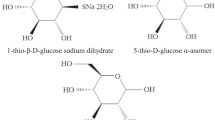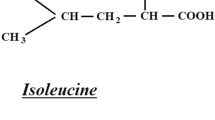Abstract
IN two previous communications1,2, the relative concentrations of diamino-diphenyl sulphone in body fluids and affected and healthy tissues of leprosy patients were compared. It was shown that the drug was preferentially concentrated in the affected tissues. In these studies the assay of radioactive drug in any tissue was made by counting macerated samples with the help of a Geiger–Müller counter.
This is a preview of subscription content, access via your institution
Access options
Subscribe to this journal
Receive 51 print issues and online access
$199.00 per year
only $3.90 per issue
Buy this article
- Purchase on Springer Link
- Instant access to full article PDF
Prices may be subject to local taxes which are calculated during checkout
Similar content being viewed by others
References
Chatterjee, K. R., and Poddar, R. K., Nature, 178, 799 (1956).
Chatterjee, K. R., and Poddar, R. K., Proc. Soc. Exp. Biol. Med., New York, 94, 122 (1957).
Author information
Authors and Affiliations
Rights and permissions
About this article
Cite this article
PODDAR, R., CHATTERJEE, K. Autoradiographic Detection of Sulphone in the Affected Tissues of Leprosy Patients. Nature 180, 854–855 (1957). https://doi.org/10.1038/180854b0
Issue Date:
DOI: https://doi.org/10.1038/180854b0
Comments
By submitting a comment you agree to abide by our Terms and Community Guidelines. If you find something abusive or that does not comply with our terms or guidelines please flag it as inappropriate.



